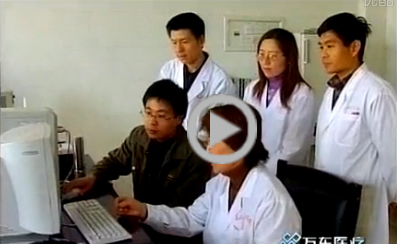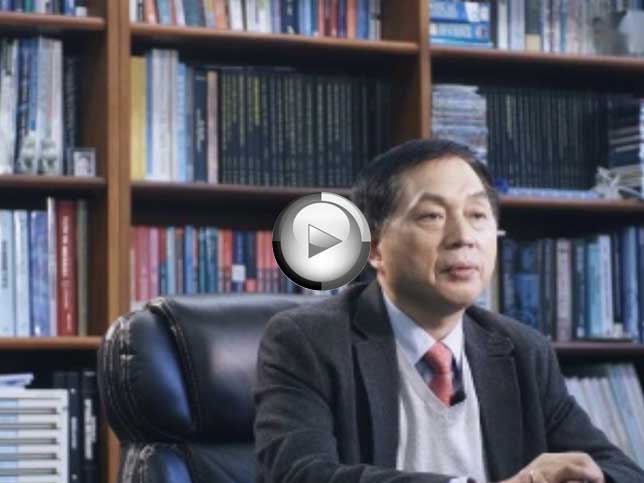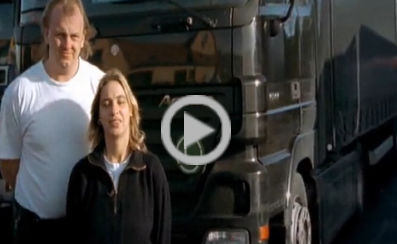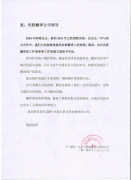上海翻译公司完成字幕英文翻译
|
01:09-01:19 |
It should be used as an introduction on how to assess and treat child with wheeze. It is intended to complement practical clinical experience. |
|
01:20-01:30 |
We will look at this in three sections:
Assessment,
Treatment,
Response to treatment
For an acute episode of wheeze |
|
01:31-01:40 |
For guidelines on the management of children with chronic wheeze, refer to the pocket book of Hospital Care for Children. |
|
01:41-01:59 |
The video illustrates children with wheeze, shows the recommended equipment for their assessment and treatment. In particular, it deals with the correct use of meter-dose inhaler with a spacer devise and correct use of the nebulizer. |
|
02:00-02:12 |
It is important to be able to assess a child with acute wheeze accurately so that correct decisions for treatment can be taken. |
|
02:13-02:19 |
The Assessment of Wheeze |
|
02:20-02:34 |
When a child is brought to you with cough or difficult breathing, you should examine the child to determine whether wheeze is present. The clinical signs of wheeze include
The wheeze sound on expiration |
|
02:35-02:45 |
Before disturbing the child, listen to the child’s breathing. You would probably have to put your ear close to the child’s mouth or use a stethoscope to hear the sound clearly. |
|
02:46-02:57 |
Listen to the sound as these children breathe out. The wheeze sound is often described as a musical sound made as the child breathes out. |
|
02:58-03:48 |
Notice that wheeze is whispered as the child breathes out, but the actual character of the wheeze sound can vary from child to child. |
|
03:49-04:13 |
Let’s look and listen again. |
|
04:14-04:49 |
In addition to the wheeze,you may have observed the following features, look closely at the child’s chest, the child may be taking longer to breathe out and then breathe in. A child with wheeze may also have chest indrawing. The child may have to make an effort to breathe out.This may result in respiratory stress. With a child in obvious discomfort, and experiencing difficulty in talking, drinking, or breast feeding. In order to observe the additional signs, you must look carefully.
|
|
04:50-04:58 |
You should not expect to see or hear all of these signs in every child with wheeze. |
|
04:59-05:48 |
Watch this child: which of the signs of wheeze do you recognize in this child? |
|
05:49-06:08 |
These are the signs we recognized: we heard the sound on expiration; longer to breathe out than to breathe in; chest indrawing; and making an effort to breathe out.You may need to wait until the child is relaxed to look and listen for wheeze. |
|
06:09-06:40 |
The commonest causes of wheeze in young children in developing countries are acute respiratory infections, such as cough, and cold and bronchoalveolitis and pneumonia and asthma. |
|
06:41-06:51 |
Since pneumonia is a major cause of death in young children in most developing countries, it is particularly important always to consider this diagnosis in children with wheeze. |
|
06:52-07:05 |
Having examined the child presenting with cough or difficult breathing, and recognized the child has wheeze, decide upon the correct treatment for that child. |
|
07:06-07:19 |
Wheeze is caused by narrowed air passages. In most children, this is due to the inflammation of the air ways, and spasm in the muscles in the walls of the air ways. |
|
07:20-07:34 |
The spasm should respond to the treatment with a bronchodilator. A bronchodilator is a drug that helps these children breathe more easily by opening the air passages of the lungs, and relaxing the bronchospasm. |
|
07:35-07:41 |
And an essential step in the assessment of children with wheeze is to look at the response to bronchodilator treatment. |
|
07:42-07:53 |
It is important that small hospitals have not only oral salbutamol for the treatment of mild wheeze, but also a rapid acting bronchodilator available. |
|
07:54-08:03 |
Rapid acting bronchodilators produce a response within 15 minutes, allowing you to make an assessment of the child’s wheeze within a short time. |
|
08:04-08:23 |
They are particularly useful in treating children with severe wheeze and helping to decide the cause of the wheeze. Those who respond to bronchodilator treatment are likely to have asthma, whereas those who do not are more likely to have pneumonia or bronchoalveolitis. |
|
08:24-08:44 |
It is therefore important that rapid acting bronchodilators be available in health centers, small hospitals, and the right equipment be available to use them properly and that doctors and nurses and other health workers are trained to administer them correctly. |
|
08:45-08:54 |
Rapid acting bronchodilator treatment methods |
|
08:55-09:08 |
There are three methods of giving treatment with rapid acting bronchodilators for the assessment and treatment of wheeze that are recommended for use in health centers and small hospitals. These are: |
|
09:09-09:22 |
The inhalation of salbutamol aerosol or mist using a meter-dosing inhaler or a nebulizer or through the injection of epinephrine, also known as adrenalin. |
|
09:23-09:32 |
In most circumstances, inhalation using an aerosol is the most effective and safest method of delivery. |
|
09:33-09:38 |
Aerosol delivery |
|
09:39-09:59 |
The two methods of aerosol delivery currently available are meter-dose inhalation and nebulization. An additional method used by adults and older children: dry powder inhalation:is ineffective for most infants and young children, therefore will not be discussed in this video. |
|
10:00-10:09 |
The meter-dose inhaler when used with a spacer devise, and nebulizer have both shown themselves to be effective treatment methods in young children. |
|
10:10-10:15 |
Metered Dose Inhalers Using a Spacer Device |
|
10:16-10:34 |
Most children under seven or eight years of age will be unable to use metered dose inhaler effectively when they are wheezing, this is because they are not able to time everything correctly to breathe in the salbutamol aerosol when it is delivered by the metered dose inhaler. |
|
10:35-10:44 |
However, metered dose inhaler can be successfully modified for use by infants and young children with addition of a spacer devise. |
|
10:45-11:06 |
The jet of spray provided by the metered dose inhaler is trapped in the spacer chamber, the propellants and evaporates leaving only the bronchodilator particles. The small particles are more likely to reach deep into the child’s airways and so be more effective than leaving the ways. |
|
11:07-11:33 |
The metered dose inhaler is placed into the end of the spacer devise, the inhaler is depressed twice to generate two puffs.The child is instructed to take five full breaths with the mouth closed around the mouthpiece. The spacer devise creates a reservoir of spray for the child to breathe.It removes the need for the child to breathe in at the moment the inhaler is depressed. |
|
11:34-11:45 |
A spacer devise with a mask can be used with young children who cannot use a mouthpiece. If commercially manufactured spacer devise is not available, it is quite simple to make your own. |
|
11:46-12:06 |
Very effective spacer devises can be easily made from half or one litre plastic bottles. However, plastic spacer devises can build up electric static charge. The charge causes salbutamol to stick to the plastic spacer devise reducing the amount available to the child. |
|
12:07-12:21 |
Washing the spacer devise in household detergent solution or soap before use can stop this occurring. This simple measure can substantially improve the effectiveness of this treatment. |
|
12:22-12:34 |
To make a spacer devise from a plastic bottle, use a pair of scissors or a sharp knife, to carefully cut out a shape similar in outline to the mouthpiece of the inhaler. |
|
12:35-13:00 |
The spacer devise[C1] is then pushed into the hole you have created. The open end of the bottle is placed into the child’s mouth. The first time you use a homemade spacer devise, use three to four puffs, afterwards you only need two puffs. After this the child breathes in and out for thirty seconds. |
|
13:01-13:04 |
The Nebulizer |
|
13:05-14:00 |
The nebulizer consists of a container into which a liquid mixture of salbutamol and water is placed. The salbutamol and water is placed here. A flow of six to eight litres per minute of oxygen or compressed air is then introduced here into the pipe which runs up to the center of the nebulizer. The flow of the oxygen or air into the nebulizer draws the salbutamol and water up the outer section of the central pipe. When it reaches the top of the pipe, it meets the oxygen or air here, the oxygen or air breaks up the salbutamol and water against this section of the nebulizer and turns it into a fine mist. The mist is then forced by the flow of oxygen or air out of the top section of the nebulizer, the child then inhales the mist. |
|
14:01--14:37 |
It is important that the nebulizer is filled and used correctly.Unscrew the top of the plastic nebulizer, and add the salbutamol solution, 0.5 milliliters of liquid salbutamol should be used for children under five years. Add 2 milliliters of normal saline or sterile water, if normal saline or sterile water is not available, drinking water should be used after it has been strained with a cloth, boiled for twenty minutes, and cooled. |
|
14:38-14:58 |
Do not overfill the nebulizer. Attach one end of the tubing to the bottom of the nebulizer and the other to an oxygen supply with a flow of six to eight litres per minute or an electric air compressor, if available, a mask or TPS may be used. |
|
14:59-15:17 |
The child should be treated until the liquid in the nebulizer has been nearly used up. This usually takes about ten minutes. It is not necessary to nebulize until all the liquid has been used. In practice about 0.5 milliliters will be left in the nebulizer bowl. |
|
15:18-15:29 |
You can tell when this point is reached as splattering sound will occur, and at this stage, little of the residual fluid is being nebulized. |
|
15:30-15:46 |
After each use, wash the mask the tubing and the nebulizer with dish-washing detergent or soap and dry thoroughly. Do not boil or steam clean the tubing or nebulizer, as this may damage them. |
|
15:47-15:50 |
Subcutaneous epinephrine (adrenaline) |
|
15:51-16:06 |
Subcutaneous epinephrine, which is also known as adrenaline, is given to young children by subcutaneous injection. It is also a rapid acting bronchodilator, which will act in about 15 minutes. |
|
16:07-16:30 |
Great care needs to be taken when administering epinephrine. It is vital to check that correct strain of solution is used. 1 : 1000 dilution should be used and
0.1 ml per kg of body weight
A one-ml syringe should be used. And the dose measured very carefully.
|
|
|
|
|
16:31-16:40 |
Follow up treatment |
|
16:41-16:57 |
Reassess the child after 15 minutes. A child with the first episode of wheezing and no respiratory stress after nebulization can usually be managed at home with oral salbutamol and supportive care only. |
|
16:58-17:14 |
If the child is still in respiratory stress,or has recurrent wheezing, give salbutamol by metered-doze inhaler or by nebulizer. If salbutamol is not available, give the child subcutaneous epinephrine. |
|
17:15-17:38 |
Reassess the child after another 15 minutes to determine subsequent treatment. If respiratory stress has been resolved, and the child has not fast breathing, advise the mother on home care with oral salbutamol syrup or tablets. If the respiratory stress persists, admit the child in the hospital for treatment. |
|
17:39-17:47 |
If the child has central cyanosis, or unable to drink, the child should be admitted in the hospital for treatment. |
|
17:48-18:08 |
In children admitted to hospital, give oxygen, a rapid acting bronchodilator, or a first dose of oral prednisolone or another steroid.
The child should be given
1 milligram of oral prednisolone for every kilogram of weight once a day for 3 days. |
|
18:09-18:21 |
A positive response should be seen within thirty minutes. If this does not occur, give rapid acting bronchodilator at up to one hourly intervals |
|
18:22-18:54 |
If there is no improvement after three doses of rapid acting bronchodilator, plus oral prednisolone, give IV aminophylline. Intravenous aminophylline can be dangerous in overdose or when given too rapidly.
Weigh the child
And give the IV dose over at least 20 minutes.
Give
Initial dose 5-6 mgs/kg
(up to a maximum of 300 mg) |
|
18:54-19:24 |
This is followed by a maintenance dose of 5 mg/kg every 6 hours.
Administer the initial dose, if the child has received any form of aminophylline in the previous 24 hours. Stop giving intravenous aminophylline immediately if the child:
Starts to vomit
Has a pulse rate of greater than 180 per minute
Develops a headache
Has a convulsion
|
|
19:25-19:49 |
All the techniques shown in the video have a role in the management of wheeze in young children. In terms of easy administering, availability and cost, metered-dose inhaler with spacer devises may be the most appropriate method for administering rapid acting bronchodilator to young children with wheeze in our patient facilities. |
|
19:50-20:10 |
However, in making your choice ,you must consider any local factor, which may influence your decision.Implementing the recommended procedures in this video will allow the correct treatment of wheeze in children with cough and difficult breathing. |
|
20:11-20:23 |
This is an essential element in the management of children with acute respiratory infection and acute wheeze. Further information is contained in the pocket book Hospital Care for Children. |
|
20:24-20:40 |
And the technical review paper Bronchodilators and Other Medications for the treatment of wheeze-associated illnesses in young children prepared by the WORLD HEALTH ORGANIZATION Department of Child and Adolescent Health Development. |
|
20:41-21:23 |
Narrated by
Maggie Mash
This video was produced by the world health organization Department of Child and Adolescent Health and Development, with assistance from
Dr. Janet Cumberland,
Sheffield Children’s Hospital
Sheffield UK
Hamish Simpson, Professor
David Thomas, Research Fellow
University Department of Child Health
Leicester, UK
And with the help and support of the staff and patients of
Al Anfushi Children’s Hospital
Alexandria Egypt
Childrens Hospital Bangkok
Thailand
El Chatby Hospital
Egypt
Leicester Royal Infirmary
Leicester UK
Sheffield Children’s Hospital
Sheffield UK
Directed by
Chris Dent
Produced by
World Health Organization
|
怀疑这里视频出错,应该是将吸入器插入储存腔(塑料瓶)所切开的口子里。
|
01:09-01:19 |
It should be used as an introduction on how to assess and treat child with wheeze. It is intended to complement practical clinical experience. |
|
01:20-01:30 |
We will look at this in three sections:
Assessment,
Treatment,
Response to treatment
For an acute episode of wheeze |
|
01:31-01:40 |
For guidelines on the management of children with chronic wheeze, refer to the pocket book of Hospital Care for Children. |
|
01:41-01:59 |
The video illustrates children with wheeze, shows the recommended equipment for their assessment and treatment. In particular, it deals with the correct use of meter-dose inhaler with a spacer devise and correct use of the nebulizer. |
|
02:00-02:12 |
It is important to be able to assess a child with acute wheeze accurately so that correct decisions for treatment can be taken. |
|
02:13-02:19 |
The Assessment of Wheeze |
|
02:20-02:34 |
When a child is brought to you with cough or difficult breathing, you should examine the child to determine whether wheeze is present. The clinical signs of wheeze include
The wheeze sound on expiration |
|
02:35-02:45 |
Before disturbing the child, listen to the child’s breathing. You would probably have to put your ear close to the child’s mouth or use a stethoscope to hear the sound clearly. |
|
02:46-02:57 |
Listen to the sound as these children breathe out. The wheeze sound is often described as a musical sound made as the child breathes out. |
|
02:58-03:48 |
Notice that wheeze is whispered as the child breathes out, but the actual character of the wheeze sound can vary from child to child. |
|
03:49-04:13 |
Let’s look and listen again. |
|
04:14-04:49 |
In addition to the wheeze,you may have observed the following features, look closely at the child’s chest, the child may be taking longer to breathe out and then breathe in. A child with wheeze may also have chest indrawing. The child may have to make an effort to breathe out.This may result in respiratory stress. With a child in obvious discomfort, and experiencing difficulty in talking, drinking, or breast feeding. In order to observe the additional signs, you must look carefully.
|
|
04:50-04:58 |
You should not expect to see or hear all of these signs in every child with wheeze. |
|
04:59-05:48 |
Watch this child: which of the signs of wheeze do you recognize in this child? |
|
05:49-06:08 |
These are the signs we recognized: we heard the sound on expiration; longer to breathe out than to breathe in; chest indrawing; and making an effort to breathe out.You may need to wait until the child is relaxed to look and listen for wheeze. |
|
06:09-06:40 |
The commonest causes of wheeze in young children in developing countries are acute respiratory infections, such as cough, and cold and bronchoalveolitis and pneumonia and asthma. |
|
06:41-06:51 |
Since pneumonia is a major cause of death in young children in most developing countries, it is particularly important always to consider this diagnosis in children with wheeze. |
|
06:52-07:05 |
Having examined the child presenting with cough or difficult breathing, and recognized the child has wheeze, decide upon the correct treatment for that child. |
|
07:06-07:19 |
Wheeze is caused by narrowed air passages. In most children, this is due to the inflammation of the air ways, and spasm in the muscles in the walls of the air ways. |
|
07:20-07:34 |
The spasm should respond to the treatment with a bronchodilator. A bronchodilator is a drug that helps these children breathe more easily by opening the air passages of the lungs, and relaxing the bronchospasm. |
|
07:35-07:41 |
And an essential step in the assessment of children with wheeze is to look at the response to bronchodilator treatment. |
|
07:42-07:53 |
It is important that small hospitals have not only oral salbutamol for the treatment of mild wheeze, but also a rapid acting bronchodilator available. |
|
07:54-08:03 |
Rapid acting bronchodilators produce a response within 15 minutes, allowing you to make an assessment of the child’s wheeze within a short time. |
|
08:04-08:23 |
They are particularly useful in treating children with severe wheeze and helping to decide the cause of the wheeze. Those who respond to bronchodilator treatment are likely to have asthma, whereas those who do not are more likely to have pneumonia or bronchoalveolitis. |
|
08:24-08:44 |
It is therefore important that rapid acting bronchodilators be available in health centers, small hospitals, and the right equipment be available to use them properly and that doctors and nurses and other health workers are trained to administer them correctly. |
|
08:45-08:54 |
Rapid acting bronchodilator treatment methods |
|
08:55-09:08 |
There are three methods of giving treatment with rapid acting bronchodilators for the assessment and treatment of wheeze that are recommended for use in health centers and small hospitals. These are: |
|
09:09-09:22 |
The inhalation of salbutamol aerosol or mist using a meter-dosing inhaler or a nebulizer or through the injection of epinephrine, also known as adrenalin. |
|
09:23-09:32 |
In most circumstances, inhalation using an aerosol is the most effective and safest method of delivery. |
|
09:33-09:38 |
Aerosol delivery |
|
09:39-09:59 |
The two methods of aerosol delivery currently available are meter-dose inhalation and nebulization. An additional method used by adults and older children: dry powder inhalation:is ineffective for most infants and young children, therefore will not be discussed in this video. |
|
10:00-10:09 |
The meter-dose inhaler when used with a spacer devise, and nebulizer have both shown themselves to be effective treatment methods in young children. |
|
10:10-10:15 |
Metered Dose Inhalers Using a Spacer Device |
|
10:16-10:34 |
Most children under seven or eight years of age will be unable to use metered dose inhaler effectively when they are wheezing, this is because they are not able to time everything correctly to breathe in the salbutamol aerosol when it is delivered by the metered dose inhaler. |
|
10:35-10:44 |
However, metered dose inhaler can be successfully modified for use by infants and young children with addition of a spacer devise. |
|
10:45-11:06 |
The jet of spray provided by the metered dose inhaler is trapped in the spacer chamber, the propellants and evaporates leaving only the bronchodilator particles. The small particles are more likely to reach deep into the child’s airways and so be more effective than leaving the ways. |
|
11:07-11:33 |
The metered dose inhaler is placed into the end of the spacer devise, the inhaler is depressed twice to generate two puffs.The child is instructed to take five full breaths with the mouth closed around the mouthpiece. The spacer devise creates a reservoir of spray for the child to breathe.It removes the need for the child to breathe in at the moment the inhaler is depressed. |
|
11:34-11:45 |
A spacer devise with a mask can be used with young children who cannot use a mouthpiece. If commercially manufactured spacer devise is not available, it is quite simple to make your own. |
|
11:46-12:06 |
Very effective spacer devises can be easily made from half or one litre plastic bottles. However, plastic spacer devises can build up electric static charge. The charge causes salbutamol to stick to the plastic spacer devise reducing the amount available to the child. |
|
12:07-12:21 |
Washing the spacer devise in household detergent solution or soap before use can stop this occurring. This simple measure can substantially improve the effectiveness of this treatment. |
|
12:22-12:34 |
To make a spacer devise from a plastic bottle, use a pair of scissors or a sharp knife, to carefully cut out a shape similar in outline to the mouthpiece of the inhaler. |
|
12:35-13:00 |
The spacer devise[C1] is then pushed into the hole you have created. The open end of the bottle is placed into the child’s mouth. The first time you use a homemade spacer devise, use three to four puffs, afterwards you only need two puffs. After this the child breathes in and out for thirty seconds. |
|
13:01-13:04 |
The Nebulizer |
|
13:05-14:00 |
The nebulizer consists of a container into which a liquid mixture of salbutamol and water is placed. The salbutamol and water is placed here. A flow of six to eight litres per minute of oxygen or compressed air is then introduced here into the pipe which runs up to the center of the nebulizer. The flow of the oxygen or air into the nebulizer draws the salbutamol and water up the outer section of the central pipe. When it reaches the top of the pipe, it meets the oxygen or air here, the oxygen or air breaks up the salbutamol and water against this section of the nebulizer and turns it into a fine mist. The mist is then forced by the flow of oxygen or air out of the top section of the nebulizer, the child then inhales the mist. |
|
14:01--14:37 |
It is important that the nebulizer is filled and used correctly.Unscrew the top of the plastic nebulizer, and add the salbutamol solution, 0.5 milliliters of liquid salbutamol should be used for children under five years. Add 2 milliliters of normal saline or sterile water, if normal saline or sterile water is not available, drinking water should be used after it has been strained with a cloth, boiled for twenty minutes, and cooled. |
|
14:38-14:58 |
Do not overfill the nebulizer. Attach one end of the tubing to the bottom of the nebulizer and the other to an oxygen supply with a flow of six to eight litres per minute or an electric air compressor, if available, a mask or TPS may be used. |
|
14:59-15:17 |
The child should be treated until the liquid in the nebulizer has been nearly used up. This usually takes about ten minutes. It is not necessary to nebulize until all the liquid has been used. In practice about 0.5 milliliters will be left in the nebulizer bowl. |
|
15:18-15:29 |
You can tell when this point is reached as splattering sound will occur, and at this stage, little of the residual fluid is being nebulized. |
|
15:30-15:46 |
After each use, wash the mask the tubing and the nebulizer with dish-washing detergent or soap and dry thoroughly. Do not boil or steam clean the tubing or nebulizer, as this may damage them. |
|
15:47-15:50 |
Subcutaneous epinephrine (adrenaline) |
|
15:51-16:06 |
Subcutaneous epinephrine, which is also known as adrenaline, is given to young children by subcutaneous injection. It is also a rapid acting bronchodilator, which will act in about 15 minutes. |
|
16:07-16:30 |
Great care needs to be taken when administering epinephrine. It is vital to check that correct strain of solution is used. 1 : 1000 dilution should be used and
0.1 ml per kg of body weight
A one-ml syringe should be used. And the dose measured very carefully.
|
|
|
|
|
16:31-16:40 |
Follow up treatment |
|
16:41-16:57 |
Reassess the child after 15 minutes. A child with the first episode of wheezing and no respiratory stress after nebulization can usually be managed at home with oral salbutamol and supportive care only. |
|
16:58-17:14 |
If the child is still in respiratory stress,or has recurrent wheezing, give salbutamol by metered-doze inhaler or by nebulizer. If salbutamol is not available, give the child subcutaneous epinephrine. |
|
17:15-17:38 |
Reassess the child after another 15 minutes to determine subsequent treatment. If respiratory stress has been resolved, and the child has not fast breathing, advise the mother on home care with oral salbutamol syrup or tablets. If the respiratory stress persists, admit the child in the hospital for treatment. |
|
17:39-17:47 |
If the child has central cyanosis, or unable to drink, the child should be admitted in the hospital for treatment. |
|
17:48-18:08 |
In children admitted to hospital, give oxygen, a rapid acting bronchodilator, or a first dose of oral prednisolone or another steroid.
The child should be given
1 milligram of oral prednisolone for every kilogram of weight once a day for 3 days. |
|
18:09-18:21 |
A positive response should be seen within thirty minutes. If this does not occur, give rapid acting bronchodilator at up to one hourly intervals |
|
18:22-18:54 |
If there is no improvement after three doses of rapid acting bronchodilator, plus oral prednisolone, give IV aminophylline. Intravenous aminophylline can be dangerous in overdose or when given too rapidly.
Weigh the child
And give the IV dose over at least 20 minutes.
Give
Initial dose 5-6 mgs/kg
(up to a maximum of 300 mg) |
|
18:54-19:24 |
This is followed by a maintenance dose of 5 mg/kg every 6 hours.
Administer the initial dose, if the child has received any form of aminophylline in the previous 24 hours. Stop giving intravenous aminophylline immediately if the child:
Starts to vomit
Has a pulse rate of greater than 180 per minute
Develops a headache
Has a convulsion
|
|
19:25-19:49 |
All the techniques shown in the video have a role in the management of wheeze in young children. In terms of easy administering, availability and cost, metered-dose inhaler with spacer devises may be the most appropriate method for administering rapid acting bronchodilator to young children with wheeze in our patient facilities. |
|
19:50-20:10 |
However, in making your choice ,you must consider any local factor, which may influence your decision.Implementing the recommended procedures in this video will allow the correct treatment of wheeze in children with cough and difficult breathing. |
|
20:11-20:23 |
This is an essential element in the management of children with acute respiratory infection and acute wheeze. Further information is contained in the pocket book Hospital Care for Children. |
|
20:24-20:40 |
And the technical review paper Bronchodilators and Other Medications for the treatment of wheeze-associated illnesses in young children prepared by the WORLD HEALTH ORGANIZATION Department of Child and Adolescent Health Development. |
|
20:41-21:23 |
Narrated by
Maggie Mash
This video was produced by the world health organization Department of Child and Adolescent Health and Development, with assistance from
Dr. Janet Cumberland,
Sheffield Children’s Hospital
Sheffield UK
Hamish Simpson, Professor
David Thomas, Research Fellow
University Department of Child Health
Leicester, UK
And with the help and support of the staff and patients of
Al Anfushi Children’s Hospital
Alexandria Egypt
Childrens Hospital Bangkok
Thailand
El Chatby Hospital
Egypt
Leicester Royal Infirmary
Leicester UK
Sheffield Children’s Hospital
Sheffield UK
Directed by
Chris Dent
Produced by
World Health Organization
|
世联翻译-让世界自由沟通!专业的全球语言翻译供应商,上海翻译公司专业品牌。丝路沿线56种语言一站式翻译与技术解决方案,专业英语翻译、日语翻译等文档翻译、同传口译、视频翻译、出国外派服务,加速您的全球交付。
世联翻译公司在北京、上海、深圳等国际交往城市设有翻译基地,业务覆盖全国城市。每天有近百万字节的信息和贸易通过世联走向全球!积累了大量政商用户数据,翻译人才库数据,多语种语料库大数据。世联品牌和服务品质已得到政务防务和国际组织、跨国公司和大中型企业等近万用户的认可。 |























